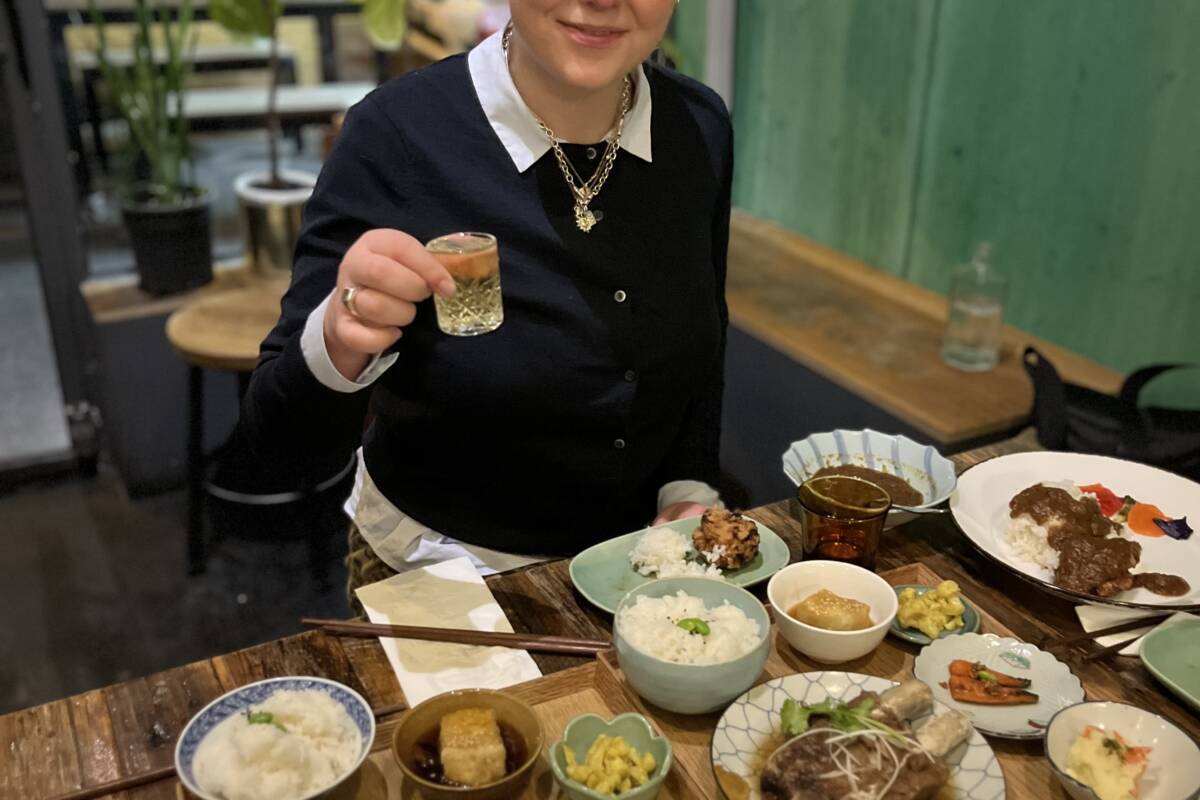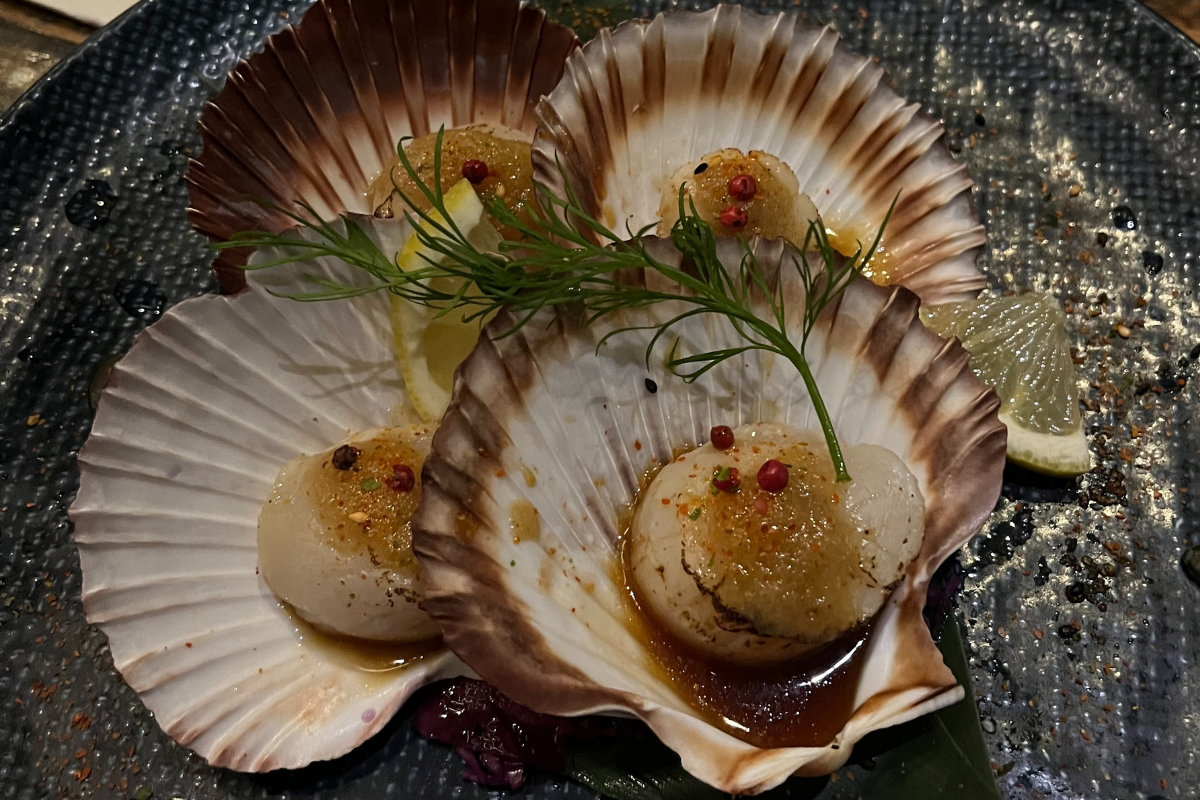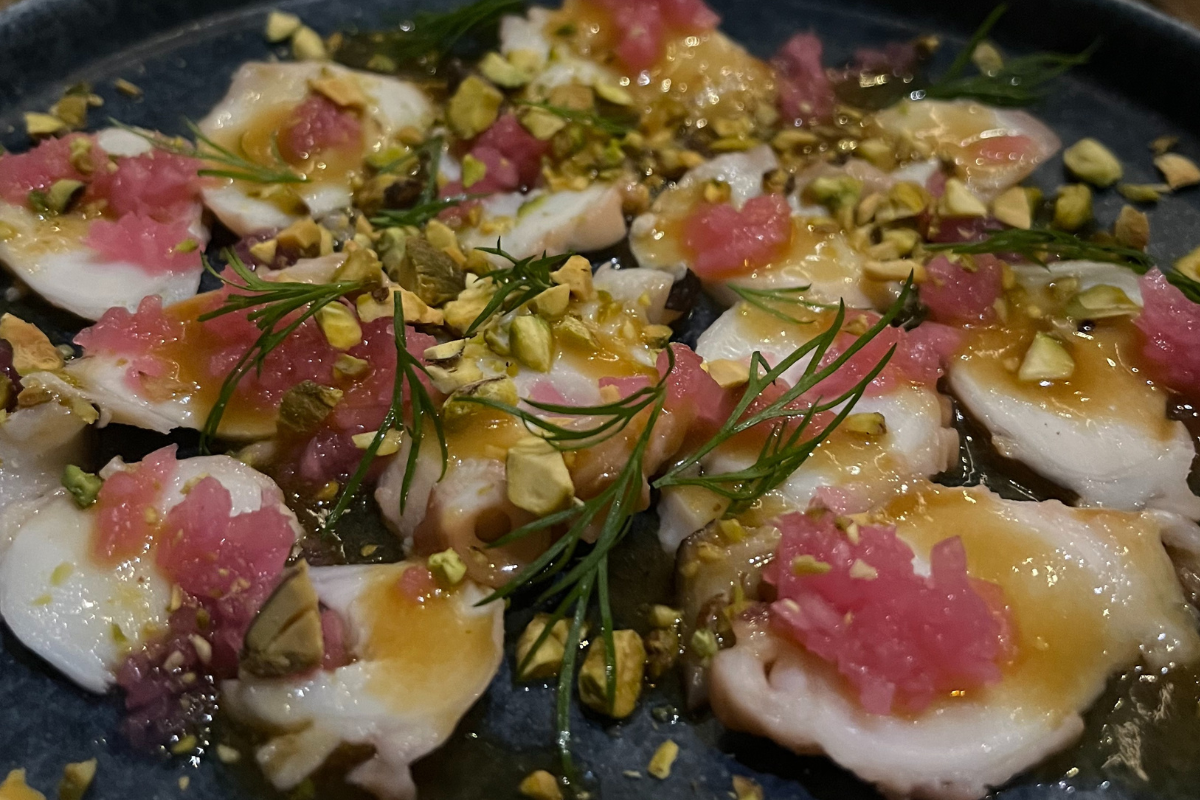
Click PLAY to hear Emilia’s full review on 3AW Breakfast
In traditional Japanese aesthetics, wabi-sabi (侘び寂び) is a worldview centred on the acceptance of transience and imperfection. The aesthetic is sometimes described as one of appreciating beauty that is “imperfect, impermanent, and incomplete” in nature. It is prevalent in many forms of Japanese art.
Smith Street is known for its meeting of cultures in so many ways and Wabi Sabi is one of the first Japanese cafes to have popped up, bringing the first taste of Eastern dishes to the street. In the 20 years since opening, Wabi Sabi have worked hard to continue to adapt to changing tastes, trends and standards whilst still keeping their own personality beating through. After their opening in 2004 they were known for being grungy and ‘cool’, in 2018 they had a major renovation they brightened up the joint, made it minimalist and added a pescatarian/vegan menu. The days of minimalism are gone as you see bright ‘Yokocho’ alleyway style signs frame the balcony and red brick walls, their menu is super inclusive with a bit of something for everyone and clear markings to follow.
I chose a sake flight and my dining guest got the tap beer which came in a stein-size glass. To start we tried the Octopus Carpaccio and Scorched scallops at the recommendation of our server. I always ask the server what their favourite dish is in the hope of finding something a little magic that I had maybe overlooked and the scallops was an absolute winner of a recommendation. Served in shells and on a bed of salt, before you even take a bite your senses are delighted.

Here’s where I had to be strategic, I had to choose between a ramen or a Japanese curry. On this night, the curry won; two birds one stone, whilst you can get an entree size of karaage (and I would recommend it if you go the ramen route) instead we chose the Chicken Karaage Curry to amalgamate two choices in one. The karaage, like all good Japanese fried chicken, had the lightness that you wouldn’t expect from fried chicken as they use potato starch as batter instead of flour. The curry sauce works more like the curry sauce you might get in an Irish pub than a thai restaurant, that is to say it works more as a gravy over the top.
Wabi Sabi is well known for the “Teishoku” which translates to “set meal’’, it is a traditional Japanese meal that includes a main dish, rice, miso soup, pickles, and an assortment of small sides. The sides are meant to provide a variety of flavours and textures to complement the main dish, while the miso soup and rice help to round out the meal. You can choose two different sizes with the smaller costing just over $20. The whole aim is to have a well-balanced and healthy meal, so I got two…

Well really I unwittingly got two, maybe in a menu layout oversight or my own oversight I didn’t realise when choosing the Pork spare rib kakuni and the Wagyu Beef Yakiniku that each dish would come on a wooden tray with an assortment of tiny bowls as sides.
The spare rib fell off the bone with little aid and the wagyu beef was cut in thin slices and wrapped around carrot and beans, an explosive bite-ful.
I think you do better in Wabi Sabi by sharing your entrees and keeping your mains to yourself. When done this way, rather than trying to find space for multiple wooden trays it becomes a $20ish main, a bowl of ramen is around the same price and the curry is the more expensive choice at around $29. What a delightful, joyful place Wabi Sabi is, from their ethos, easy dining feel and rich history. The dishes feel like old friends of the chefs, revisiting well known flavours and reinventing themselves to keep owners and diners continually entertained.
